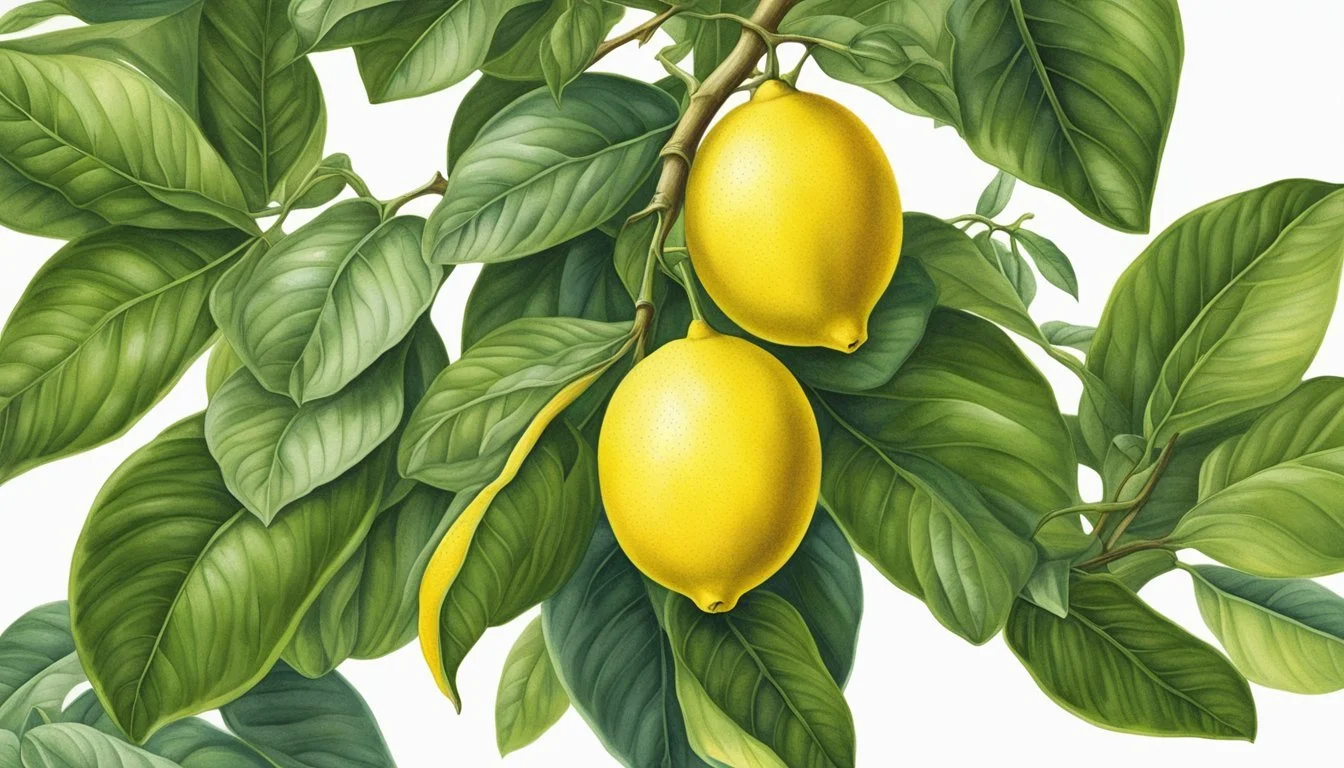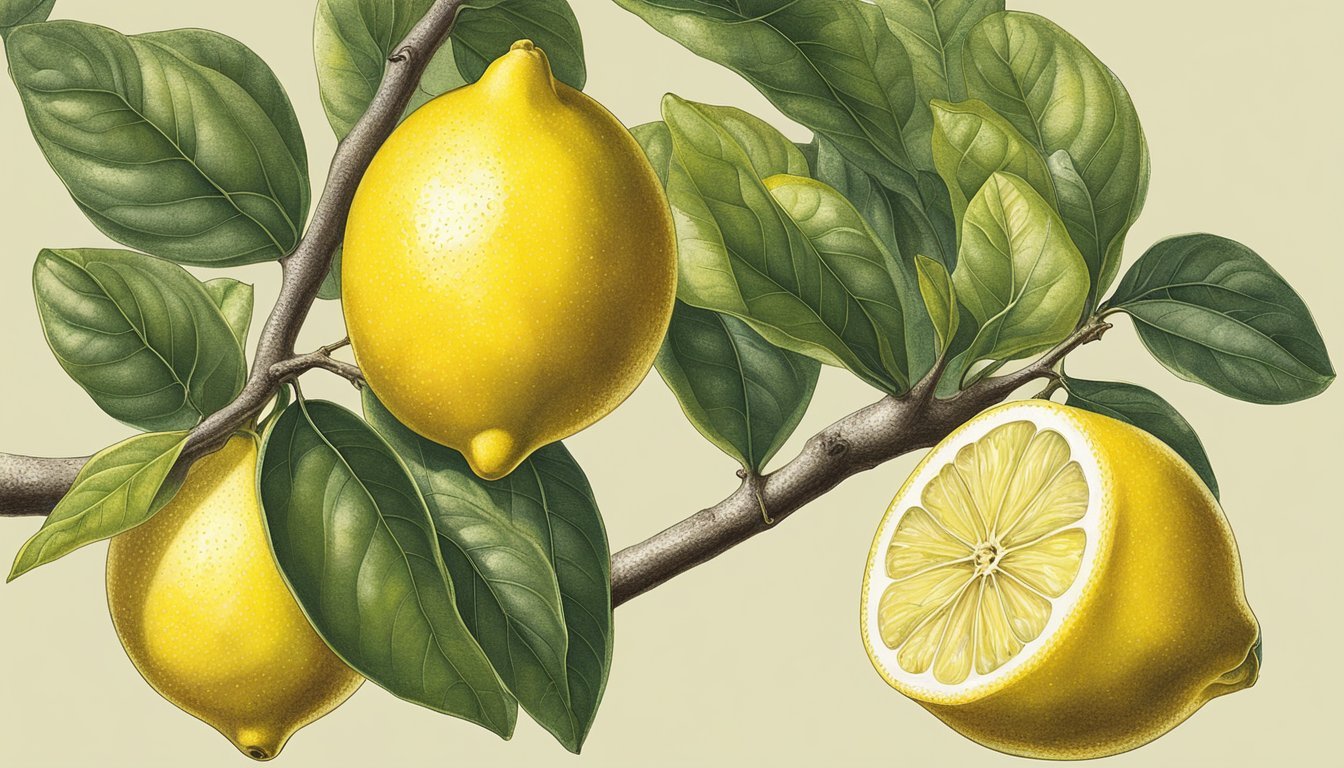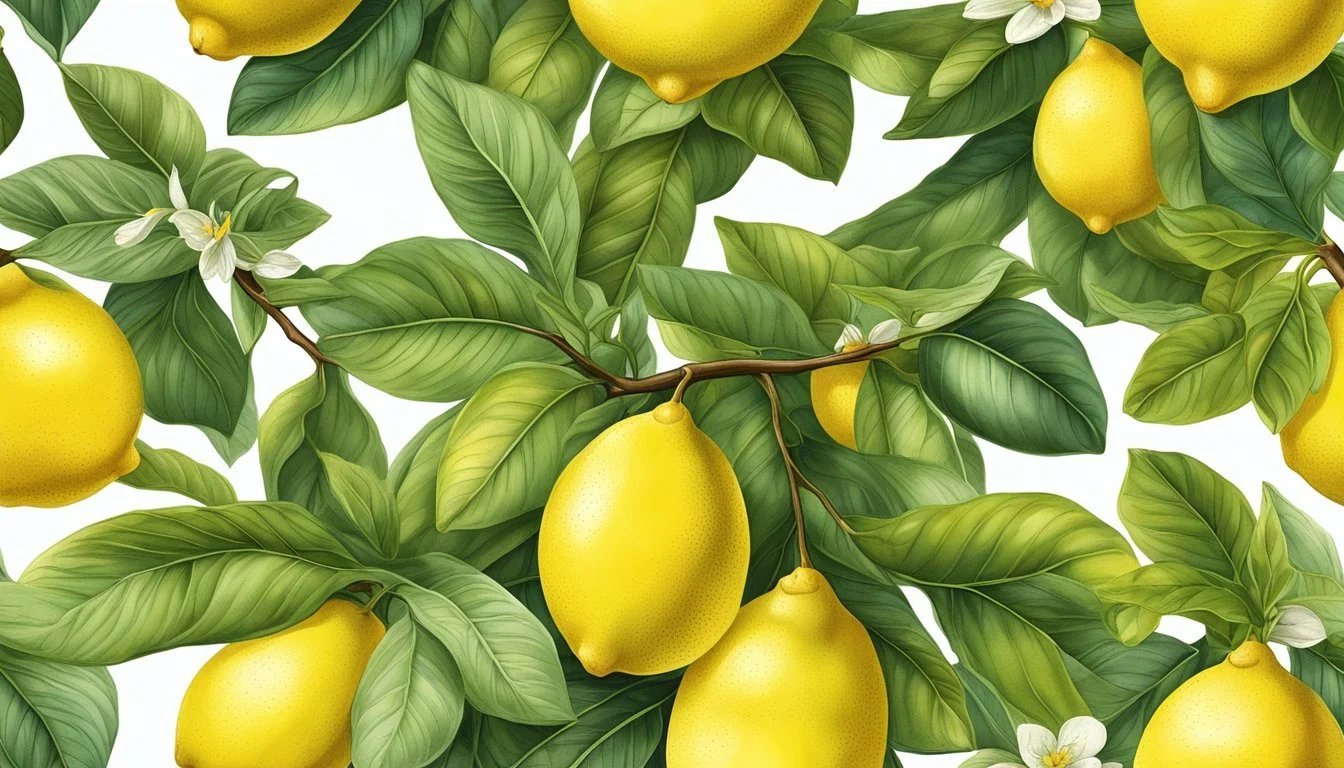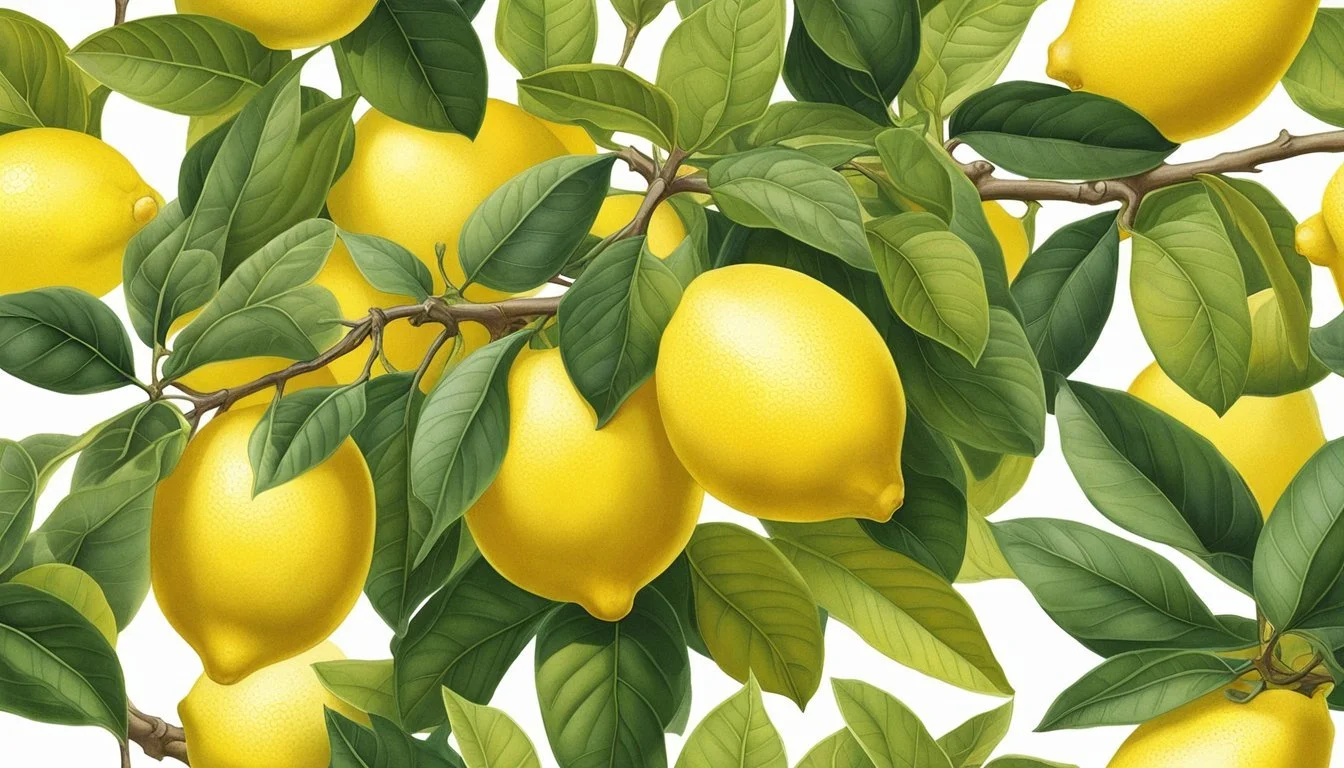How to Tell if a Eureka Lemon is Ripe
Your Ultimate Fruit Ripeness Indicator
Eureka lemons are a staple citrus variety cherished for their tangy flavor and vibrant color, commonly found in grocery stores. These lemons, known scientifically as Citrus limon, originated from Italy and have become widely popular in the United States. As a home gardener or a consumer wanting to enjoy the freshest possible produce, understanding when a Eureka lemon is ripe is essential.
The ripeness of a Eureka lemon can be discerned through a combination of visual and tactile indicators. A ripe Eureka lemon will exhibit a bright yellow color, without any green shades that denote immaturity. Size also matters, as Eureka lemons are generally large when mature. To the touch, the skin should feel firm, but with a slight give that indicates juiciness. An aromatic citrus scent is another hallmark of a ripe lemon, suggesting a readiness for consumption or culinary use. The intricacies of recognizing ripeness are part of a larger cycle that includes planting, caring, and harvesting, each step influencing the quality and flavor of the final fruit.
Key Takeaways
A ripe Eureka lemon is characterized by its glossy yellow color, large size, and firm yet slightly yielding texture.
Identifying the right time to harvest lemons requires an understanding of physical cues and the optimal growth conditions for the fruit.
Incorporating Eureka lemons into dietary routines can offer both flavorful and nutritional enhancements to a variety of dishes.
Identifying Eureka Lemons
Scientifically known as Citrus limon, Eureka lemons are a prominent type among the various citrus fruits. They are distinguishable by their characteristic yellow thick skin and medium oblong shape. Unlike some other types of lemons, Eureka lemons possess a vibrant hue when ripe and typically have a glossy finish.
One can recognize a Eureka lemon tree by looking for the following traits:
Height and Spread: The standard Eureka lemon tree can grow to be about 12 feet tall and 15 feet wide. In semi-dwarf varieties, trees reach about 12 feet in height but have a narrower spread of approximately 8 feet.
Foliage: These lemon trees are known for having less dense foliage than the Meyer lemon trees, which makes spotting the fruit somewhat easier.
Thorns: They are almost entirely free of thorns, which is an unusual yet notable characteristic. This is unlike other lemon varieties that often have thorny branches.
Fruit Ripening: Eureka lemons have the unique advantage of ripening all year long, providing a continuous supply of fruit.
When assessing fruit directly:
Color: Ripe Eureka lemons will be a bright, solid yellow.
Feel: They should possess a firm texture but should yield slightly under gentle pressure.
Aroma: A strong, zesty citrus aroma is a good indicator of ripeness.
The Eureka lemon's tangy taste and high acidity make it a versatile choice for culinary uses. The fruit's consistent quality and all-year availability make it a favorite among lemon varieties for both growers and consumers.
Optimal Conditions for Growing Eureka Lemons
Growing a Eureka Lemon tree successfully requires understanding the specific climate needs, care routines, and protective measures against frost. These evergreen trees can produce ripe, flavorful lemons with the correct conditions.
Climate and Environment
Eureka lemons thrive in warm, sunny environments similar to their native climate of California. They require:
A climate that offers full sunlight for at least six to eight hours daily, with ten to twelve hours being ideal.
A location with well-draining soil that maintains moisture without becoming waterlogged.
Spring is an optimal time for new plantings, taking advantage of growing seasons and milder weather patterns.
Caring for Your Eureka Lemon Tree
When it comes to nurturing a Eureka Lemon tree, a consistent care routine bolsters its health and fruit production:
Soil should be kept moist but not soggy, checking dryness at a depth of two inches to determine the need for watering.
Regular applications of a fertilizer formulated for citrus trees are crucial to provide essential nutrients.
Maintaining the tree's foliage with pruning ensures sunlight penetration and air circulation, which are vital for tree health.
Protection from Frost
Despite their preference for warmth, Eureka Lemon trees can be at risk during cold snaps:
Provide protection from frost by covering the tree or using heat sources like outdoor lamps during unexpected cold weather.
Positioning the tree in a sheltered part of the garden or utilizing windbreaks can minimize frost damage.
Consistent attention to these optimal conditions will aid in producing a healthy Eureka Lemon tree that can yield delicious ripe lemons year after year.
Indicators of Ripeness
Identifying a ripe Eureka lemon involves assessing specific characteristics that signal its readiness for consumption. These indicators include color and appearance, texture and firmness, size and weight, and the lemon's fragrance.
Color and Appearance
A ripe Eureka lemon is characterized by its vibrant, glossy yellow color. It exhibits a uniform hue with no traces of green, indicating full maturation. The skin's surface should be smooth with a slight sheen, reflecting good quality fruit.
Texture and Firmness
The texture of a ripe lemon should feel firm with a slight give under pressure. If the lemon is too soft or has spots of mushiness, it might be an indication of over-ripeness or deterioration. Conversely, a lemon that feels hard to the touch is likely underripe.
Size and Weight
An optimal ripe lemon will be medium to large in size, carrying weight that feels heavy for its size. This heft suggests that the lemon is full of juice, which is a desirable trait for ripe lemons.
Smell Test
One should smell the lemon, particularly around the stem end. A ripe Eureka lemon will exude a strong, zesty citrus aroma. The fragrance should be pleasant and not overpowering, indicating the fruit's ripe status. A lemon lacking scent is likely not ripe, while an unpleasant odor can signal spoilage.
Harvesting Techniques
When harvesting Eureka lemons, identifying the ripe fruit and understanding the optimal harvest period are key to obtaining the best quality lemons.
How to Pick
To properly pick a Eureka lemon, one should gently grasp the fruit and twist it until it comes away from the branch. It's important to avoid pulling directly, as this can damage the fruit or the tree. A ripe Eureka lemon should detach easily, signifying it's ready to be harvested.
Visual inspection: The lemon should be a vibrant yellow without any green spots.
Tactile cues: The skin should be smooth and the lemon should have a slight give when pressed gently.
Best Time to Harvest
The best time to harvest Eureka lemons is when they've reached full coloration and are slightly soft to the touch. Unlike some fruits, lemons do not continue to ripen significantly once they are off the tree, so timing is important.
Year-round ripening: Eureka lemons can ripen all year, but each lemon should be judged individually.
Ideal conditions: Harvest in the early morning or late afternoon to avoid the heat of the day, which can cause damage to the lemons.
Post-Harvesting Tips
Proper post-harvesting procedures are crucial to maintaining the quality of Eureka lemons. Correct storage can prolong shelf life, while preventing over-ripening ensures the lemons retain their desired acidic taste.
Storing Eureka Lemons
Temperature: Store ripe Eureka lemons at a constant temperature between 54°F to 58°F (12°C to 14°C) to maintain optimal freshness and delay over-ripening.
Humidity: Aim for a relative humidity of 85% to 90% in the storage area to prevent the lemons from drying out.
Airflow: Good ventilation helps to remove ethylene gas produced by the lemons, which can accelerate ripening and aging.
Sunlight: Keep lemons in a dark place as light can degrade the quality and lead to a loss of vitamin C.
Preventing Over-Ripening
Inspection: Regularly check stored lemons for signs of spoilage such as soft spots or mold, and remove affected fruits to protect the rest.
Usage: Use lemons that exhibit any signs of ripeness sooner rather than later to enjoy them while they are at their peak in flavor and texture.
Isolation: Store ripe Eureka lemons away from other fruits that produce higher levels of ethylene; this gas can hasten ripening and reduce the quality of lemons.
Using Eureka Lemons in the Kitchen
Eureka lemons, known for their bold flavor and high acidity, are versatile in culinary applications, adding a bright, zesty twist to an array of recipes. Their juice enhances both sweet and savory dishes.
Juicing Techniques
When juicing Eureka lemons, one aims to extract the maximum amount of juice while preserving its vibrant flavor. Begin by rolling the lemon on a hard surface to soften it, which makes it more juicy. For hand juicing, cut the lemon in half and use a citrus reamer or a handheld juicer pressing firmly to release the juice. If using an electric juicer, follow the manufacturer's instructions to ensure all the juice is optimally extracted. Strain the juice to remove seeds and pulp for a smoother consistency in drinks and recipes.
Incorporating into Recipes
Eureka lemons infuse recipes with a flavorful punch whether it’s in desserts, drinks, or savory dishes. The juice can be used to prepare homemade lemonade, imparting a refreshing tartness. In the realm of desserts, a classic Eureka lemon zest can be added to cookie dough or cake batters for a citrusy flavor. The acidity of the juice can also balance the sweetness in desserts. For savory dishes, use the lemon juice as a marinade for meats or part of a dressing for salads.
Sweet applications: Eureka lemon’s juice and zest can contribute to the sweetness and flavor of pastries, such as lemon bars or meringue pies.
Savory applications: Incorporate the juice in sauces or glazes to add a bright note to dishes, or use it to accentuate flavors in seafood or chicken recipes.
Understanding Lemon Varieties
When exploring the world of lemons, it is crucial to recognize the distinct characteristics and purposes of different lemon varieties, such as the Eureka and Meyer lemons. These qualities will guide you in selecting the perfect lemon for your culinary needs.
Comparison with Meyer Lemons
The Eureka lemon is often contrasted with the Meyer lemon, which is a sweeter, less acidic variety. Meyer lemons are usually smaller, have a more round shape, and possess a thinner peel than the Eureka. One can identify Meyer lemons by their deep yellow color and slightly orange tinge. They contain fewer seeds and tend to have a smoother surface, lacking the pronounced bumps found on Eureka lemons. The Meyer lemon also has a distinct taste, which is moderately sweet with a less intense tartness, making them ideal for desserts.
Distinct Features of the Eureka Lemon
The Eureka lemon stands out with its bright, glossy yellow skin and a shape that can range from elliptical to oblong. This variety has a more textured rind with a thicker and sturdier structure. Eureka lemons are known for their high acidity and strong citrus flavor, which are optimal for recipes requiring a pronounced lemon taste. In addition, they have a moderate number of seeds. The tree itself is characterized by having more open branches and thorns compared to the Meyer lemon tree.
Selecting the Right Lemon for Your Needs
When it comes to selecting the ideal lemon for a specific dish or use, one must consider the flavor profile and qualities of different lemon types. For a tart, traditional lemon flavor, the Eureka lemon is the preferred choice, especially for savory dishes or where a strong lemon presence is desired. If a milder, sweeter citrus taste is the goal, such as in baking or beverages, the Meyer lemon would be the more suitable option. It is crucial to match the lemon variety to the intended quality and outcome of your culinary creation.
Health Benefits and Nutritional Information
Eureka lemons, a type of citrus fruit, are not only known for their tangy flavor but also for their impressive health benefits and nutritional content. They are a rich source of various vitamins and minerals, providing several dietary benefits while fitting into a wide range of dietary restrictions.
Vitamins and Minerals
Eureka lemons are an excellent source of Vitamin C, an essential nutrient that is vital for the repair and regeneration of tissues, helps with the absorption of iron, and improves skin health by contributing to the production of collagen. Lemons also contain vitamin B6, thiamin, and folic acid, which are crucial for energy metabolism and neurological function. Here’s a brief overview of the key vitamins and minerals found in a typical Eureka lemon:
Vitamin C: about 53 mg per 100 g
Calcium: about 26 mg per 100 g
Potassium: about 138 mg per 100 g
These nutrients contribute to various body functions, including maintaining healthy blood pressure levels and supporting immune function.
Dietary Uses and Restrictions
Eureka lemons have a versatile role in culinary applications ranging from a flavor enhancer in beverages to a key ingredient in desserts and savory dishes. Their high citric acid content makes them an excellent natural preservative.
For those with dietary restrictions:
Lemons are naturally gluten-free, making them suitable for individuals with celiac disease or gluten sensitivity.
They are also low in calories, which is beneficial for individuals who are monitoring their calorie intake.
The fruit is composed of soluble fiber (primarily in the pith), which can support digestive health.
They qualify as a keto-friendly food due to their low carbohydrate content.
Remember to be mindful of lemon intake if dealing with acid reflux or citrus allergies, as lemons can exacerbate these conditions.
Crafting Your Own Citrus Box
Crafting a citrus box allows one to experience the variety and freshness of seasonal citrus fruits. Whether it includes zesty Eureka lemons from Italy or sweet oranges from South Texas, creating a citrus box can be a delightful journey through flavor and aroma.
Creating a Seasonal Citrus Box
When building a Seasonal Citrus Box, one should consider the ripeness and origins of the fruits. A well-curated box may contain:
Eureka Lemons: Known for their vibrant yellow color and plump size.
Oranges: Ideal picks are juicy and have a firm texture.
Grapefruit: A perfect balance of sweetness and tartness.
Mandarins: Smaller and sweeter, with a gentle peel.
For a Quarterly Seasonal Box consider the following timeline:
Quarter: Q1
Fruits Likely to Include: Mandarins, early variety oranges
Quarter: Q2
Fruits Likely to Include: Eureka lemons, late variety oranges
Quarter: Q3
Fruits Likely to Include: Grapefruit, beginning of Eureka lemon
Quarter: Q4
Fruits Likely to Include: Eureka lemons, mandarins
Joining a Citrus Club
For continuous enjoyment, joining a Citrus Club like the Craft Citrus Club gives access to a variety of citrus fruits throughout the year. Members can opt for different sizes such as the Rio Box or the Grande Box, depending on their needs. This way, they will receive a carefully selected assortment of Eureka lemons, oranges, grapefruit, and mandarins right to their doorstep, ensuring they enjoy the peak freshness of each season.







